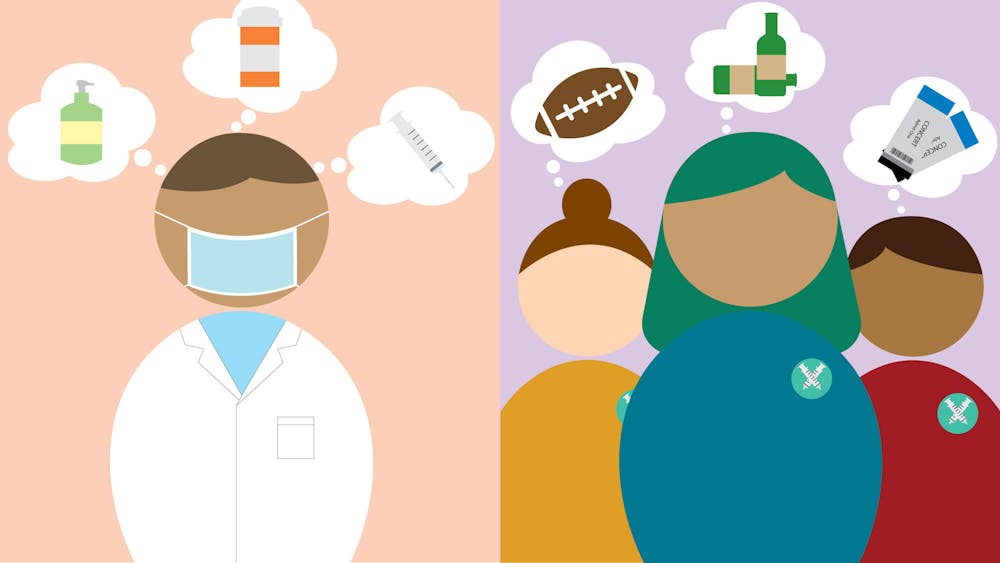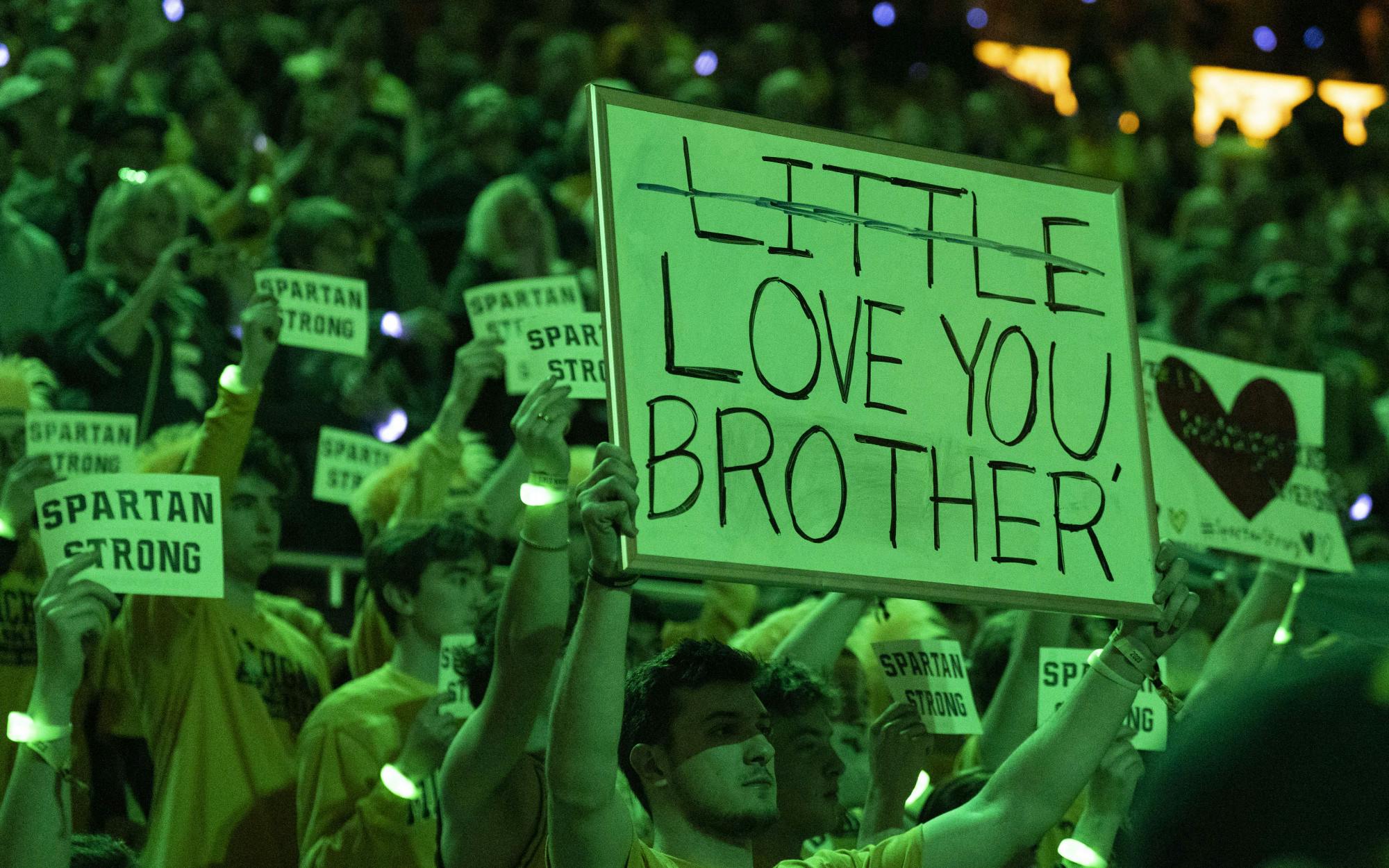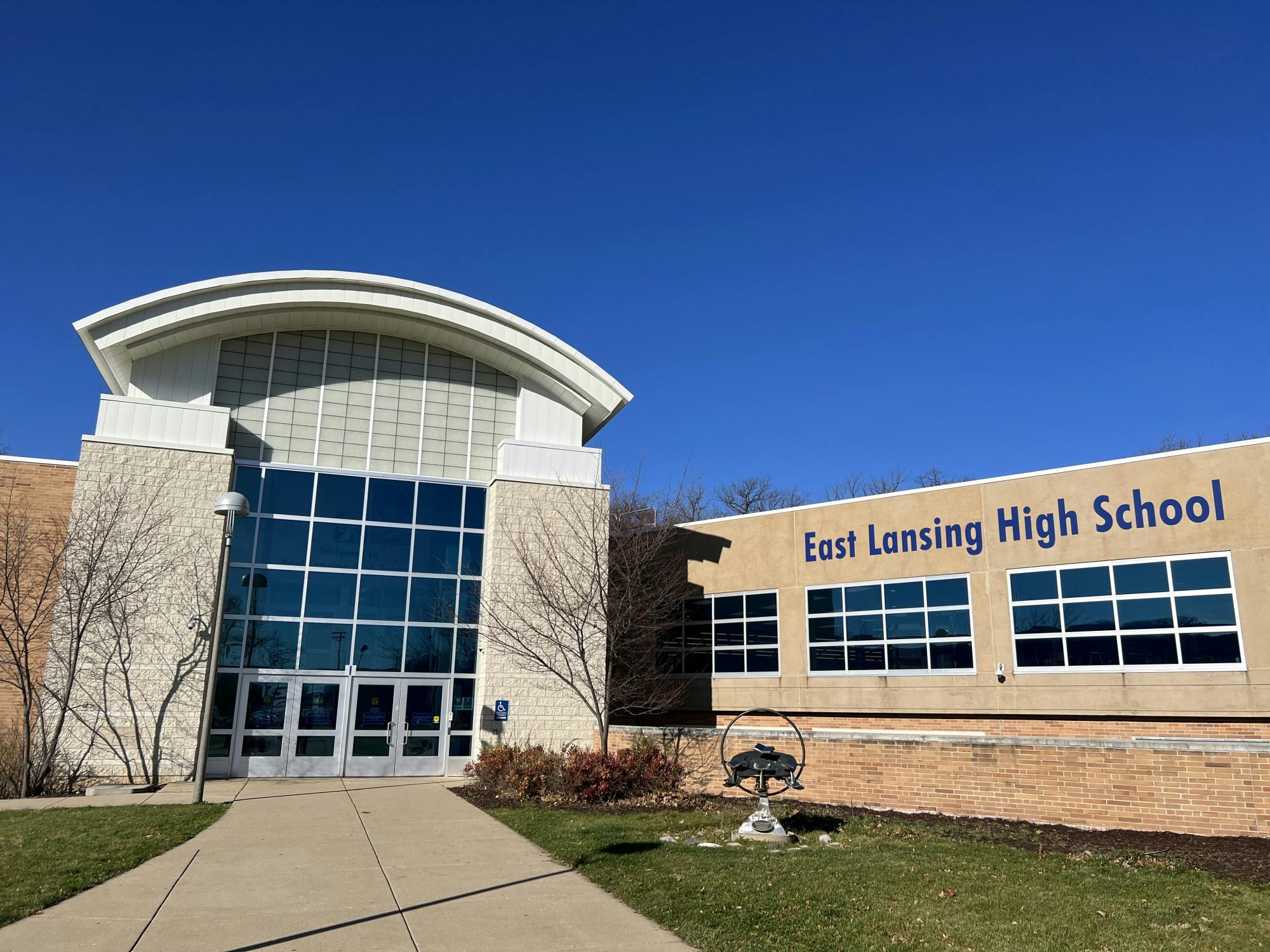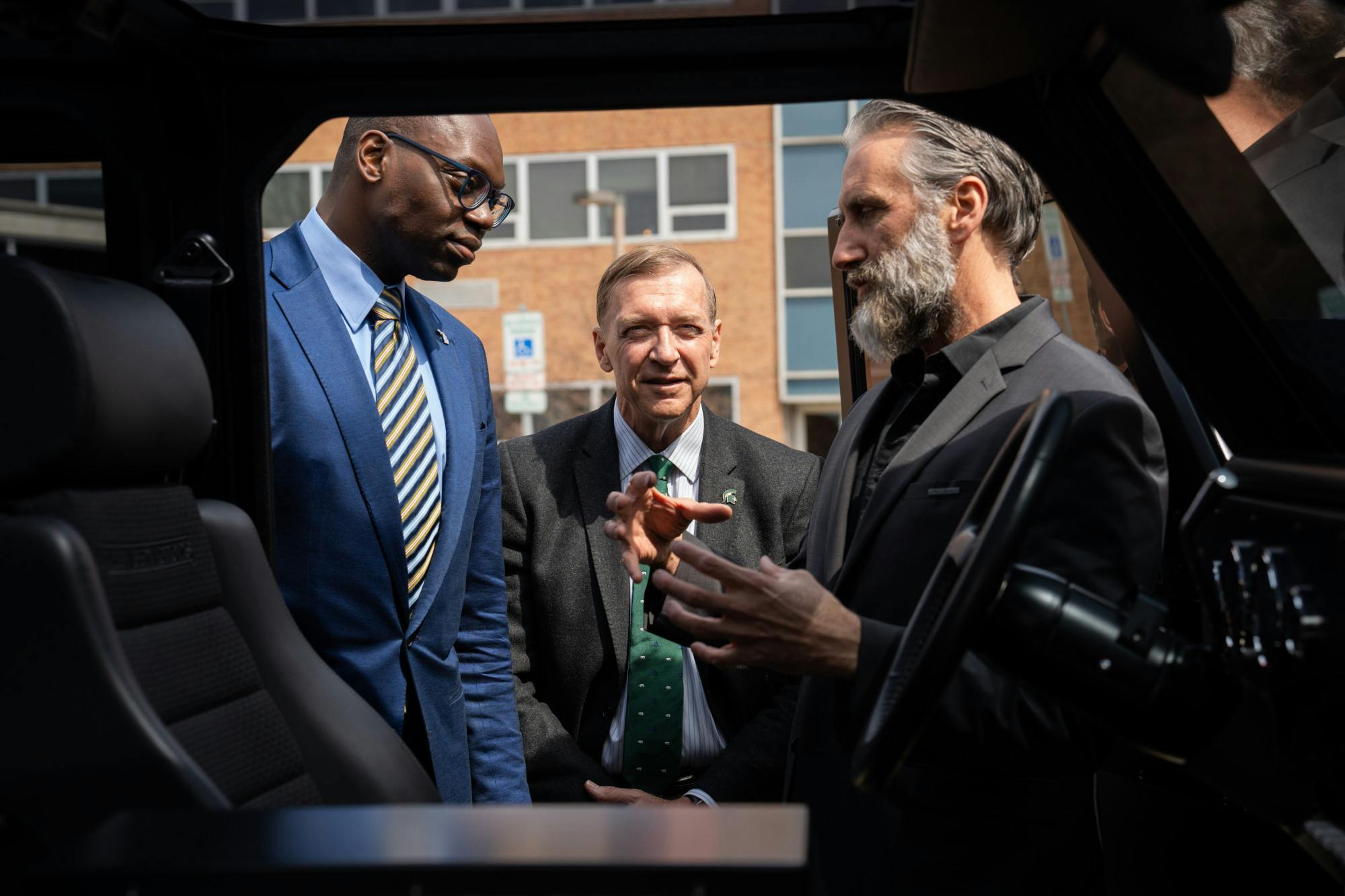Students pack into classrooms for in-person instruction. Signs on CATA buses that read “mask up” are relatively ignored. Sporting events, bars and gyms that were once closed indefinitely are now bustling with life.
These scenes are a stark contrast to those who were on Michigan State University's campus three years ago.
In March 2020, students were asked to leave their on-campus residences as classes shifted to an online format. East Lansing's downtown was left quiet as students and locals adapted to Michigan's "Stay Home, Stay Safe" order. In the next two semesters that followed, campus remained mostly empty.
"It was just completely dead,” Logan Bry previously told The State News. “It was like the university was teeming with life before, and anywhere you'd go there were too many people if anything. Now the streets were just empty and barren, there were very few people going anywhere. I mean, it was just very sad.”
Classes resumed in person in August of 2021, with many second-year students experiencing campus for the first time. The change yielded some hiccups throughout the year — classes were transitioned back online for three weeks in January of 2022 after an influx of COVID-19 cases.
"Back to normal"
But now, in-person classes have held steady for over one year. Natalie Tyndall, a 2022 alumna of MSU said East Lansing feels like it’s gone back to normal.
“There’s some people that went full throttle going back to the partying scene,” Tyndall said.
Data from January 2023 compared to that of April 2020, shows that the shift in attitude aligns with a decrease in confirmed COVID-19 cases. According to the CDC, the COVID-19 community-level threat for Ingham County is marked as “low,” with 69.42 confirmed cases per 100,000 during the week of March 7 through March 15.
Human capital and society senior Brynne Lennox is a bartender at an East Lansing bar, where she's worked since the bars initially reopened in spring of 2021. She said that because of the precautions her workplace has taken, she never felt unsafe about COVID-19.
When Lennox started working at the bar, patrons were only allowed in groups of six or fewer and they could not leave their tables for anything other than to use the bathroom.
“If you got up at all, you were usually questioned where you were going,” Lennox said. “If you were going to the bathroom then you had to put your mask on for your walk to the bathroom, but you weren't allowed to go to other tables.”
Lennox said these regulations slowly started easing as the rest of the state became more relaxed with COVID-19 precautions. This allowed for guests to leave their tables and for the bar to expand its hours. Some of the habits from these days have remained, however, such as the constant need for cleaning and an overall lower bar capacity.
Since these precautions have been pulled back, Lennox said she hasn’t felt any less comfortable going to work and she doesn't worry about contracting COVID-19. At the end of the night, Lennox said, servers, rather than a cleaning crew, wipe down each individual menu and bleach every area that needs it.
The bar scene isn't alone experiencing significant differences as attitudes towards the pandemic lighten up. MSU recently announced that it will no longer be requiring the COVID-19 vaccination, citing the “widespread protection of the individuals who have already been vaccinated” plus new boosters and treatments options.
However, there are some who are skeptical of the university’s reported vaccination numbers — James Madison College professor Gene Burns being one.
A challenge for immuno-compromised community members
“I don’t believe their numbers of whatever it was, 95%,” Burns said. “Because all you had to do is say, ‘I was vaccinated,’ and apply two dates that made sense, choose dates that were three or four weeks apart. I think most people probably were (vaccinated), but if you were actually an anti-vaxxer, it is very easy to get around this requirement.”
For Burns, the need for vaccinations comes from his need for extra levels of protection against the virus. Unlike Lennox and other MSU students who could enjoy the lifted mandates, he still uses the precautions that were the norm for roughly two years. He's asked his students to continue using them as well.
“I don't blame students,” Burns said. “I explained my situation to them. I said, ‘I'm in my 60s, so my understanding is I'm probably about five or 10 times more likely than them to have serious COVID symptoms.’”
Support student media! Please consider donating to The State News and help fund the future of journalism.
Burns taught one class in the fall of 2022, during which he asked his students to wear masks since he did not expect them to do so without him asking. Burns said he also informed his students that he was concerned for the safety of his mother-in-law, someone he visits frequently and who is also more at risk for severe ramifications of the illness.
“At students’ age, you’re really not a great risk, it’s just dramatically different," Burns said. "So, it's understandable, somebody in their 20s is going to not see many people who look very sick because they're not going to encounter any. Eventually, almost all of them wore masks and I thought it was actually very sweet."
But Burns and other immunocompromised professors are not the only people who still need to take these extra precautions. Those who work and study in healthcare settings still need these layers of protection, since they are possibly exposed to COVID-19 in their everyday lives.
Students in health care remain cautious
Nursing junior Brenna Gordon says COVID-19 is still very relevant in her day-to-day experiences. Because she goes is in a health care setting twice a week for clinical rotations, she doesn't want to get patients, her classmates or herself sick.
She said her attitude has stayed the same or, if anything, increased since the height of the pandemic.
“I definitely pay more attention to (COVID-19) now and I'm more careful about what I'm doing,” Gordon said. “If everyone's getting sick, I'm like, 'Okay, maybe I won't go hang out with my friends this weekend.' Or, if I know one of my friends is sick, I'm like, 'Let's put some distance there just so then I don't take anything into the hospital or infect my professors or classmates.'”
Gordon said she wishes more MSU students took COVID-19 more seriously.
“I feel like everyone's more focused on partying, which isn't bad because partying is fun," Gordon said. "But when everyone's sick, they're like, 'Oh, we can still go out,' instead of like, 'Oh, maybe we should stay in because everyone's getting sick.'”
Gordon finds that people do not understand how serious COVID-19 can be until severe symptoms directly affect them or their family. Most people, she said, treat it like the flu, which can have dangerous implications.
In some standout cases, individuals may experience ‘long COVID-19’, which College of Osteopathic Medicine professor Dr. Peter Gulick defines as residual symptoms of the virus a month or more after initial infection.
In these cases, individuals test negative for the virus but experience a myriad of symptoms. Gulick said this condition is nearly impossible to diagnose and has no treatment.
Medical professionals like Gulick still advise the community to get vaccinated.
“When people say ‘Oh, I'll just get the virus and let it get in my system and my body will get immune to it and then I'll be better, I don't need a vaccine,’ well, then you have to worry, ‘will I get this long COVID syndrome?’” Gulick said.
Despite seemingly widespread comfort, Gulick said the possibility of new variants should remind individuals to keep cautious. He said for college students that may not be at risk for severe infection, they should still be empathetic to coming in contact with individuals that have a higher risk for morbidity.
“You may not be worrying so much about protecting yourself, but you may have to worry about contaminating somebody that may be at higher risk," Gulick said.



